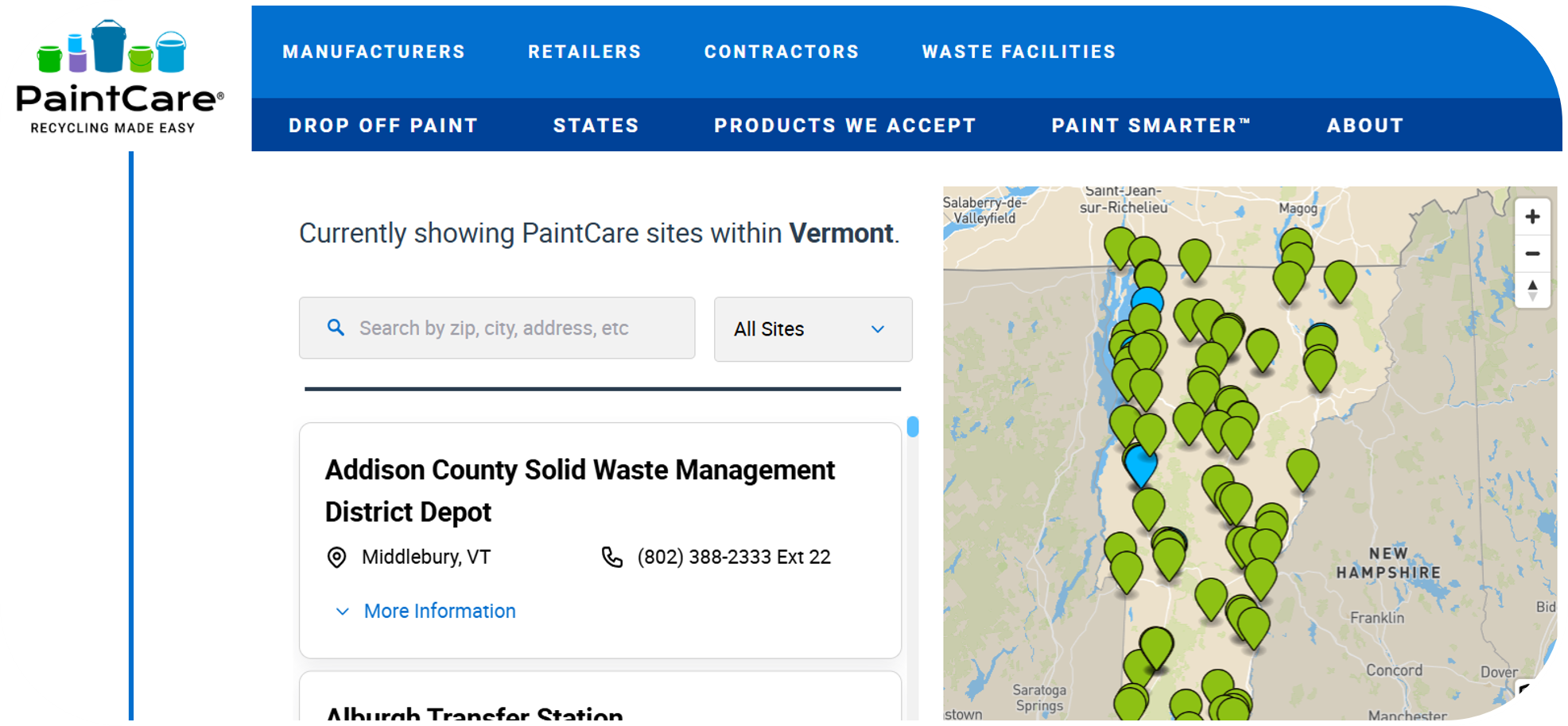The Vermont Paint Recycling program offers FREE recycling for paints, stains, and varnishes at locations across Vermont. The paint is blended and sold for reuse all around Vermont rather than being wasted. The program is funded by paint manufacturers (Act 58).
See below for information on (1) drop off locations, (2) paint storage and safety, (3) collector resources, and (4) Vermont's Paint Stewardship Program.
1. Paint Free Drop-off Locator

